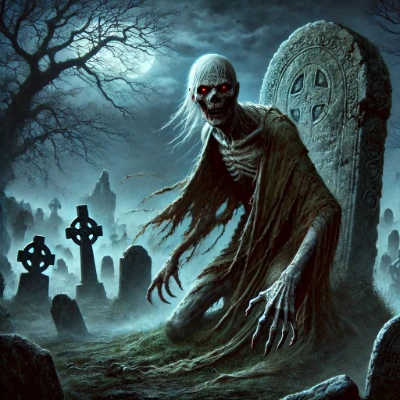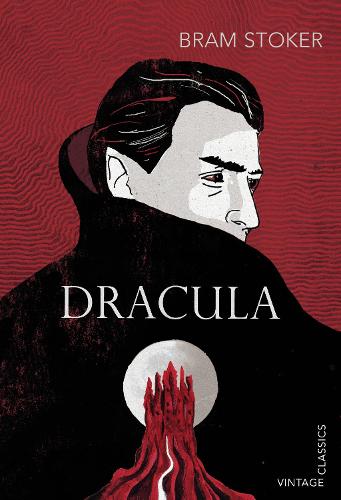The Legend of the Abhartach
Irish folklore is steeped in tales of the supernatural, but few are as chilling as the legend of the Abhartach. An unjust chieftain turned bloodthirsty being; the Abhartach has intrigued and terrified generations. But was this sinister figure merely a creation of ancient imaginations, or could he have inspired modern vampire stories?
Let’s delve into the story of Abhartach, a legend that bridges Ireland’s mythical past and its dark, supernatural lore.

Who Was the Abhartach?
The name “Abhartach” roughly translates to “dwarf” or “crooked one,” reflecting his physical deformity or stature. Despite his small size, Abhartach was a cruel and feared chieftain. His rule was marked by tyranny, and some versions of the legend suggest he possessed dark magical powers that made him even more terrifying.
Abhartach’s reputation as a malevolent figure was so great that his people sought to end his reign. Yet his death—and what followed—would seal his place in Irish folklore forever.
The Legend Unfolds
The tale begins with Abhartach’s death at the hands of a neighbouring chieftain. His people rejoiced, believing they were finally free of his cruelty. However, their relief was short-lived. Abhartach rose from his grave and transformed into an undead being. He began demanding blood from the villagers to sustain his undead existence, spreading terror across the land.
Desperate and fearful, the villagers sought help from the chieftain who had originally slain him. But killing Abhartach again didn’t solve the problem; he rose once more, each time more vengeful than before.
How Was the Abhartach Defeated?
Realising the situation required extraordinary measures, the villagers consulted a druid. The druid explained that Abhartach was no ordinary undead. To put an end to his terror, he had to be impaled with a sword made of yew wood, a tree associated with death and immortality in Celtic mythology. Additionally, his body needed to be buried upside down, surrounded by thorns, and secured under a large boulder to prevent his escape.
Following these instructions, the villagers finally subdued Abhartach. His grave, located in modern-day County Derry and known as Slaghtaverty Dolmen or the “Giant’s Grave,” remains a site of fascination.
Is the Abhartach Ireland’s Original Vampire?

The Abhartach legend predates the European vampire archetype but shares striking similarities. Like the vampires of folklore, Abhartach drank the blood of the living to sustain himself. His return from the grave and insatiable hunger for blood have led some to speculate that he may have inspired Bram Stoker’s Dracula. Stoker, an Irishman, was likely familiar with local legends and could have drawn on the story when creating his iconic vampire.
However, unlike the romanticised vampires of modern fiction, Abhartach was grotesque and terrifying, more aligned with Irish tales of revenants—restless undead beings returning to torment the living.
Cultural and Mythological Context
The story of Abhartach reflects deep-seated fears in Irish culture, such as tyranny, the unnatural, and the breach between life and death. Ancient Irish traditions often emphasised the importance of proper burial rites, and the Abhartach tale serves as a chilling reminder of what could happen when those rites are not followed.
Moreover, using natural elements like the yew tree and thorns to defeat Abhartach underscores the Celtic reverence for nature’s power to protect and heal.
Modern Legacy
Today, the legend of Abhartach continues to captivate those interested in Irish folklore and the supernatural. Slaghtaverty Dolmen, his supposed grave, intrigues visitors with its eerie history. The tale has also found its place in popular culture, inspiring books, documentaries, and debates about its connection to vampire mythology.
For anyone fascinated by the macabre and mystical, the story of Abhartach is a must-explore piece of Ireland’s rich storytelling heritage.
Conclusion
The legend of Abhartach endures not only as a spine-chilling tale but also as a testament to the power of Irish folklore to capture the imagination. Whether he inspired Dracula or not, Abhartach reminds us of Ireland’s deep connection to the supernatural. So, the next time you hear a vampire story, consider the possibility that its roots may lie in the dark soil of Irish myth.
References
- Joyce, Patrick Western. The Origin and History of Irish Names of Places. Legare Street Press 2022.
- “Does Abhartach, the vampiric chieftain, still stalk the Derry hills?” Visit Derry Journal.
- MacKillop, James. Dictionary of Celtic Mythology. Oxford University Press, 1998.
- Ó hÓgáin, Dáithí. The Lore of Ireland: An Encyclopaedia of Myth, Legend and Romance. Boydell Press; First Edition 2006
